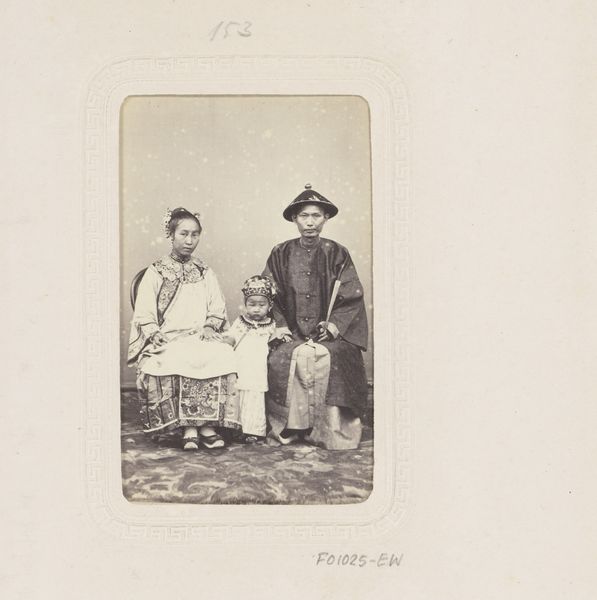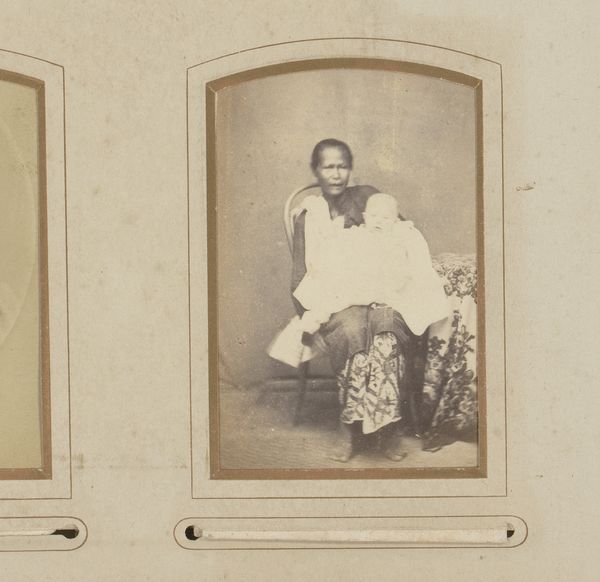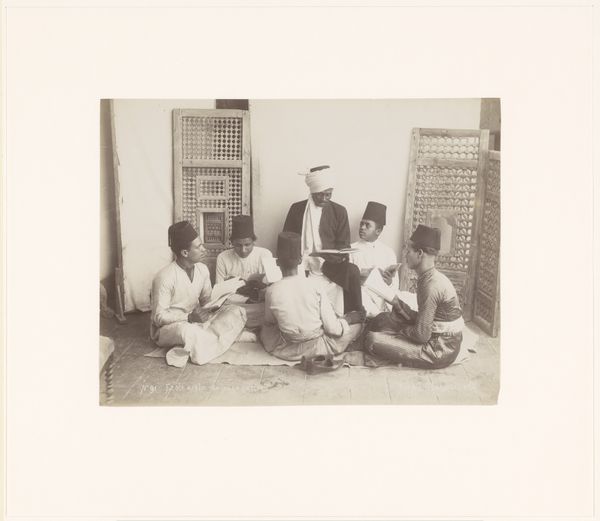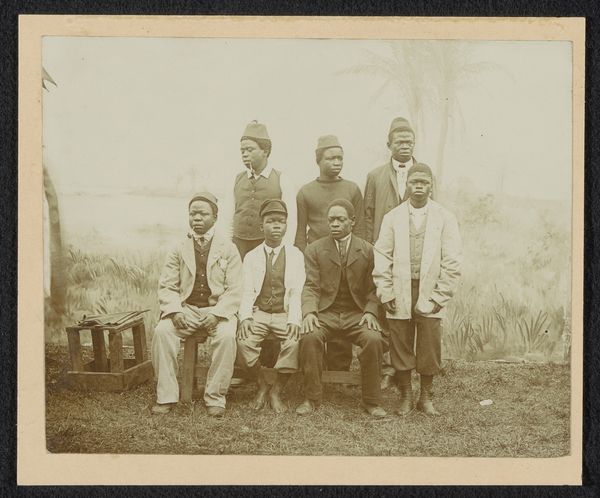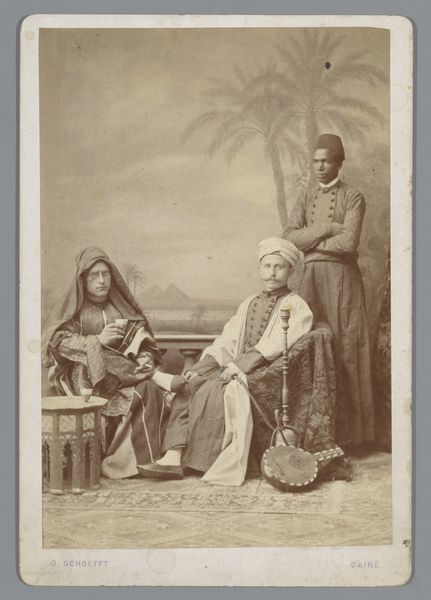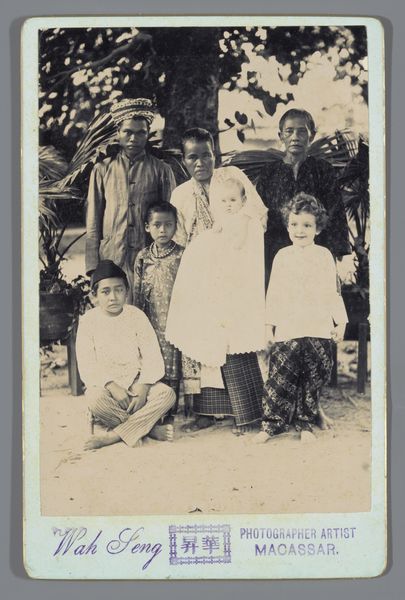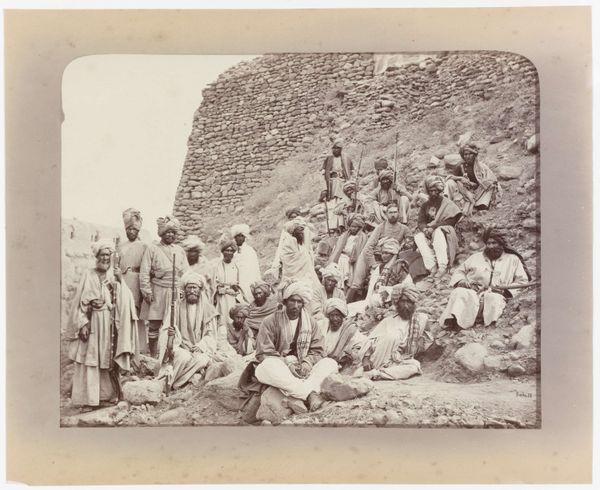
photography
#
portrait
#
african-art
#
photography
#
historical photography
#
group-portraits
#
orientalism
#
genre-painting
Dimensions: height 85 mm, height 52 mm
Copyright: Rijks Museum: Open Domain
Curator: This photograph, titled "Portret van een Indonesische familie," was captured sometime between 1857 and 1880 by Woodbury & Page. It's a striking example of early photography used for portraiture and, to a degree, ethnographic documentation. Editor: The first thing that strikes me is its stillness. The subjects appear frozen, their expressions difficult to read. There’s an air of formality but also, perhaps, vulnerability in their fixed gazes. Curator: That stillness is characteristic of early photographic processes, which demanded long exposure times. However, it also speaks to the dynamics of power at play. These photographs, often categorized under "Orientalism," reflect a Western gaze that sought to capture and classify other cultures. We must ask, what was the power dynamic between the photographer and the photographed? Who commissioned this portrait, and for what purpose? Editor: Absolutely. Looking at their clothing, the detailed fabrics, and the headdresses, it is clear this was intended for display. The subjects have clearly dressed carefully for the portrait. It feels posed and perhaps a tad detached. I can only wonder about their own understanding of the moment. Curator: Indeed. Early photography like this often intersected with colonial agendas. Images of families, such as this one, became part of the visual repertoire that defined perceptions of the "exotic other." It’s crucial to question these portrayals and examine the layers of representation at work, considering whose perspectives are amplified and whose are marginalized. Are they willing participants or were they encouraged to? Editor: From a socio-historical perspective, such portraits played a role in shaping public understanding of distant lands. They became part of the broader narrative constructing an unequal world. We are forced to recognize our place within it, even in contemporary times. The composition itself frames them almost like a curio. Curator: And, from an intersectional viewpoint, understanding race, gender, and class is so key. We need to question what it represents about Indonesians during this time. Were they powerful? Were they wealthy? Why photograph them specifically, in that time, at that place? It’s not as simple as observing and seeing anymore, but about unpacking that view as something rooted in societal bias. Editor: That's right. This photograph offers not just an image of a family, but a reflection on the complex interplay of power, representation, and historical context. Curator: Hopefully these issues will stay with you, as they remain critical in thinking about art history as more than a purely aesthetic phenomenon, but a critical historical and political tool of meaning making.
Comments
No comments
Be the first to comment and join the conversation on the ultimate creative platform.




